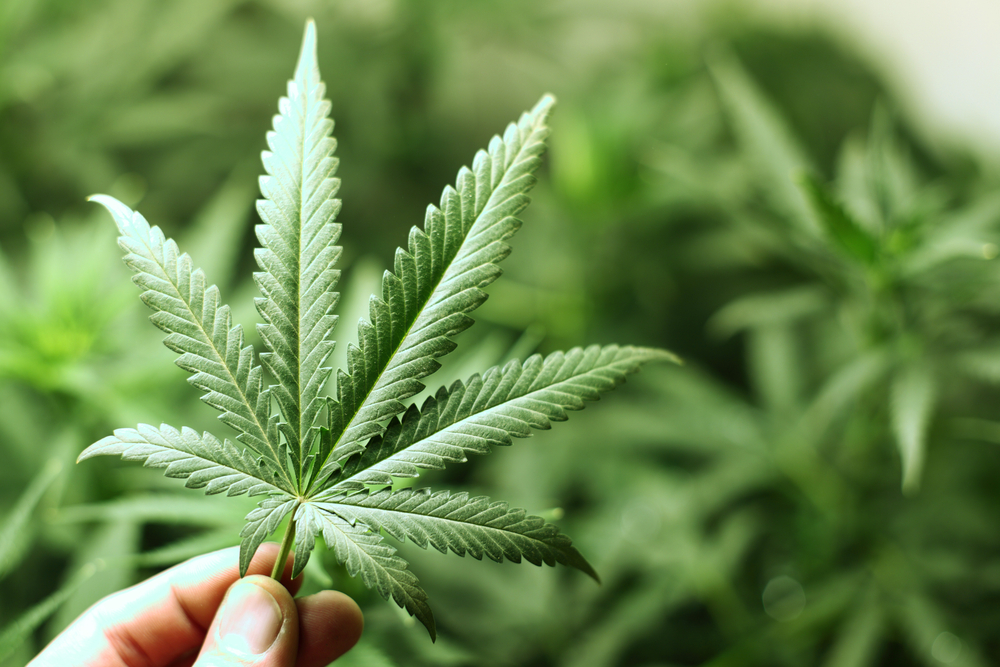Cannabis is the most used illicit drug worldwide (UNODC, 2023), and it may become more prevalent as we see an increase in legal cannabis markets worldwide. Meanwhile, the THC content in cannabis has dramatically increased over the past 50 years (Freeman et al., 2021), which may be associated with more severe health effects (Petrilli et al., 2021). As US president, Joe Biden, once said, comparing olden-day to modern-day cannabis is like “comparing buckshot in a shotgun shell to a laser-guided missile” (Vice, 2019).
As we witness greater access to more potent, and potentially more harmful cannabis products, it has never been more important to understand the health risks associated with use.
But cannabis has been around for a long time, shouldn’t we understand the harms already? Unfortunately, our knowledge is…well, limited. We know that psychiatric conditions are common among those using cannabis (Petrilli et al., 2021), but it can be difficult to clarify whether the health condition contributed to cannabis use, cannabis use contributed to the health condition, or cannabis use and the health condition was due to shared factors (e.g. low socioeconomic status). Chicken or the egg kind of stuff.
Several methods can be used to overcome this challenge, such as looking at genetics or following up with people long-term. Studies using these methods have found the strongest evidence for an association between cannabis use and psychotic conditions as well as cannabis use disorder (CUD) (Petrilli et al., 2021). Unfortunately, very few of these high-quality studies have investigated the relationship between cannabis and affective disorders, some of the most common mental disorders worldwide.
In response, researchers from Denmark, Australia and the US, were able to make use of some very impressive data to understand whether cannabis use disorder is associated with a subsequent diagnosis of unipolar depression or bipolar disorder (Jefsen et al., 2023).

The increased presence of THC content in cannabis emphasises the need to understand the health risks associated with cannabis use.
Methods
This study used nationwide Danish register data, which provides information from all permanent residents in Denmark since 1968. That’s right, ALL! Those aged at least 16 years living in Denmark from 1995 to 2021 were included. Registry information captured by the study included a recorded hospital diagnosis of a cannabis use disorder (CUD), an affective disorder, other substance use disorders (SUDs), demographics, and relevant parental information. This information was used to compare the risk of residents developing an affective disorder depending on whether they had previously met the diagnosis for a CUD.
Results
A whopping 6,651,765 individuals (50.3% female; 49.7% male) were included in the analysis, followed up for an accumulative 119,526,786 person-years. Of these, 60,696 residents (0.9%) received a diagnosis of cannabis use disorder (CUD), and 260,746 (3.9%) developed an affective disorder.
40.7% of individuals with CUD received a diagnosis of unipolar depression. After adjusting for the presence of other associated factors (e.g. parental cannabis use disorder, other SUDs), individuals with CUD had a higher risk of any type of unipolar depression (HR, 1.84; 95% CI, 1.78 to 1.90) compared with individuals with no records of a CUD. This association remained significant even after adjusting for other psychiatric conditions developed prior to CUD.
Another brilliance of this longitudinal data is the ability to look at the time taken between developing CUD and an affective disorder. Relative to those with no CUD, the highest risk of developing depression occurred within the first 6-months of a CUD diagnosis. Although a greater risk of later depression remained up to 10 years post-CUD.
When it came to bipolar disorder, 14.1% received a diagnosis following a CUD. Like depression, those with a diagnosis of CUD were more likely to develop any type of bipolar disorder. This was the case for both men (HR, 2.96; 95% CI, 2.73 to 3.21) and women (HR, 2.54; 95% CI, 2.31 to 2.80) even after adjusting for associated factors. This association remained significant after adjusting for other psychiatric conditions developed prior to CUD.
Again, when looking at the time between CUD and bipolar disorder, the highest risk of diagnosis occurred within the first 6 months and remained significant beyond 10 years.

Relative to those with no cannabis use disorder, those with a diagnosis were significantly more likely to develop unipolar depression or bipolar disorder.
Conclusions
Two key findings are clear from these results:
- Individuals with a presence of cannabis use disorder (CUD) are at a greater risk of later developing unipolar depression and bipolar disorder.
- The risk of this transition is greatest within the first 6 months of developing CUD but remains elevated long-term.

A diagnosis of cannabis use disorder poses a greater risk of developing an affective disorder, particularly within the first 6 months.
Strengths and limitations
What makes this evidence rather compelling is the sheer size of the sample and the length of time at which they were monitored. Not only does this allow the authors to capture data from a broad population, but also dynamic changes in mental health and substance use that occur along the life course.
The size of the sample is also critically important when investigating the consequences of conditions that are low in prevalence (0.9% diagnosed with CUD). If this study only had, say…1,000 people, there would be too few participants with the exposure (CUD) to be able to confidently detect an association with the outcome (affective disorders).
The longitudinal nature of the study also helped with the chicken or the egg situation. As the authors mention, past studies often don’t account for the order in which these conditions occur, hence they are unable to make conclusions about whether CUD increased the risk of affective disorders, or vice-versa. However, this study was able to focus on people with CUD first, providing greater certainty that CUD contributed to the affective disorder, and not the other way around.
On the other hand, there are a couple of limitations of this study that are worth pointing out. Firstly, participants were only identified as having a CUD or other mental health diagnosis according to a psychiatric registry. While this captures people initiating treatment, we know that people with these conditions often don’t access treatment (Substance Abuse and Mental Health Services Administration, 2022). Hence, the analysis was unable to account for these people, which may have altered the results.
Secondly, we must be careful when interpreting these findings concerning international populations. Relative to other countries, treatment services in Denmark are more financially accessible, and the availability of cannabis products and their concentrations of THC differ (Freeman et al., 2021). Therefore, these findings may be unique to individuals living in Denmark.

While the study is a significant contribution to the literature, caution should be taken with its generalisation to non-treatment-seeking individuals and those outside of Denmark.
Implications for practice
Despite these limitations, these findings have major implications for clinical practice. As cannabis policies become more permissive, there is a reasonable concern that this may increase rates of CUD and contribute further to the incidence of other mental health disorders. However, several strategies can be implemented to offset these harms.
The authors conclude that the greatest risk of transitioning from a CUD to an affective disorder diagnosis was in the first 6 months, highlighting the importance of early treatment. Traditionally, the treatment of mental health and substance use disorders has been siloed (Nordentoft et al.,2022), where substance use disorders are often neglected in the treatment of other mental health, and vice versa. We now know that these conditions are often associated, making it critical to design treatment pathways that effectively address both conditions at an early stage in their development.
These conditions often emerge in adolescence, so young people need to be equipped with the knowledge and skills to access treatment services. Governments must also invest in prevention and information programs that are aimed at offsetting the use of cannabis and its resulting harms.
But of course, our heads would be buried in the sand to think that young people will stop using cannabis at the drop of a hat. Therefore, we must effectively communicate harm-reduction strategies. The greatest risk of CUD and resulting harms occur when young people use cannabis at an early age, so delaying use is key. We also know that frequent use of more potent products (greater concentrations of THC) is associated with the greatest risk of harm. Although illicit cannabis markets can make it difficult to estimate the potency of a product, consumers can titrate their use, or use smaller amounts. For more details on these harm-reduction strategies and others, please see the Lower-Risk Cannabis Use Guidelines (Fischer et al., 2017).
Lastly, policymakers must design cannabis legislation that is health-focused. A growing number of countries have indeed adopted legal cannabis policies, but these policies vary dramatically in terms of what products can be obtained, where from, and how they can be consumed. Those designing legislation must consider the health ramifications of these factors, and how they can be addressed, before jumping into the cannabis pool.

Policymakers and clinicians need to communicate associated risks and effective harm-reduction strategies with people affected by cannabis use disorders.
Statement of interests
No conflicts of interest to declare.
Links
Primary paper
Jefsen OH, Erlangsen A, Nordentoft M, Hjorthøj C. (203) Cannabis Use Disorder and Subsequent Risk of Psychotic and Nonpsychotic Unipolar Depression and Bipolar Disorder. JAMA Psychiatry. 2023;80(8):803–810. doi:10.1001/jamapsychiatry.2023.1256
Other references
World Drug Report (2023). United Nations.
Freeman, T. P., Craft, S., Wilson, J., Stylianou, S., ElSohly, M., Di Forti, M., & Lynskey, M. T. (2021). Changes in delta-9-tetrahydrocannabinol (THC) and cannabidiol (CBD) concentrations in cannabis over time: systematic review and meta-analysis. Addiction, 116(5), 1000-1010.
Petrilli, K., Ofori, S., Hines, L., Taylor, G., Adams, S., & Freeman, T. P. (2022). Association of cannabis potency with mental ill health and addiction: a systematic review. The Lancet Psychiatry, 9(9), 736-750.
VICE (2019). Weed Is Way Stronger Than It Used to Be. That’s Why It Should Be Legal. https://www.vice.com/en/article/pa7anb/why-weed-should-be-legal-its-getting-stronger-more-potent
Substance Abuse and Mental Health Services Administration. (2022). Key substance use and mental health indicators in the United States: Results from the 2021 National Survey on Drug Use and Health (HHS Publication No. PEP22-07-01-005, NSDUH Series H-57). Rockville, MD: Center for Behavioral Health Statistics and Quality, Substance Abuse and Mental Health Services Administration.
Nordentoft M, Krantz MF, Hageman I. Right-Based Mental Health Care—Advantages of Tax-Financed Universal Mental Health Care: Lessons From Denmark. JAMA Psychiatry.2022;79(1):7–8. doi:10.1001/jamapsychiatry.2021.3167
Wiktorowicz, M., Abdulle, A., Di Pierdomenico, K., & Boamah, S. A. (2019). Models of concurrent disorder service: policy, coordination, and access to care. Frontiers in Psychiatry, 10, 430489.
Fischer, B., Russell, C., Sabioni, P., van den Brink, W., Le Foll, B., Hall, W., Rehm, J., & Room, R. (2017). Lower-Risk Cannabis Use Guidelines: A Comprehensive Update of Evidence and Recommendations. American journal of public health, 107(8), e1–e12.







